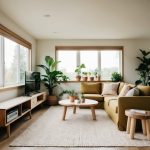Timeless Rugs That Bring Elegance to Any Room: A Classic Style Guide
The Cultural Tapestry of Rugs

Rugs are more than decorative pieces; they hold cultural significance, reflecting the rich history and traditions of the regions from which they originate. Their designs and craftsmanship tell stories that have been passed down through generations, offering a unique glimpse into diverse cultures.
Persian Rugs: Woven History
Persian rugs are renowned for their intricate designs and vibrant colors. Originating from regions that are now part of Iran, these rugs are esteemed for their craftsmanship and historical significance. Detailed floral patterns and symmetrical designs often adorn Persian rugs, reflecting the sophistication and elegance of ancient Persian art.
The cultural importance of Persian rugs is immense, with some pieces telling stories or depicting historical events. Creating these rugs involves meticulous techniques that have evolved over centuries, exemplifying the artistry and dedication of Persian weavers.
Persian rugs are often seen as symbols of luxury, as their intricate patterns and rich colors have made them highly sought after globally. Their production involves a deep commitment to tradition, with many artists dedicating years to master the skills required to produce such exquisite works.
Berber Rugs: Stories in Thread
Berber rugs, originating from the Berber tribes in North Africa, showcase a blend of functional design and cultural storytelling. These rugs often feature bold, geometric patterns created using organic dyes and natural wool. The designs frequently hold cultural significance, illustrating aspects of Berber life or representing symbolic meanings passed down through generations.
The traditional process of weaving Berber rugs is a community effort, with techniques and patterns specific to different tribes. Each rug is treated as a canvas where personal and cultural narratives are woven into the fabric, making each piece unique. The simplicity in color and design allows them to fit seamlessly into various interior styles.
Berber rugs are celebrated not only for their aesthetic appeal but also for their durability and warmth, making them both a practical and meaningful choice in a home. They embody a rich history and connection to the Berber people, providing a tangible link to their cultural heritage.
Moroccan Rugs: Timeless Charm
Moroccan rugs, known for their distinct aesthetics and vibrant designs, have captivated the modern design world. Often characterized by asymmetric patterns and rich textures, these rugs carry the charm of Moroccan artistry. The use of bold colors and varied textures stands out, reflecting the diverse cultural influences within Morocco.
These rugs are more than mere floor coverings; they tell stories through their patterns. Weavers often infuse personal narratives and symbols into the designs, making each Moroccan rug a reflection of its maker’s life and community.
Moroccan rugs hold cultural significance, as they are crafted with traditional techniques passed down through generations. These pieces, while stylish and contemporary, hold a deep connection to Moroccan history and culture, allowing them to enrich any space they inhabit.
Selecting Rugs for Different Room Types
Rugs add personality and sophistication to various rooms, serving both aesthetic and functional purposes. Each room benefits from specific considerations in rug selection, reflecting its unique function and atmosphere.
Elevating Living Rooms with Elegance
Living rooms are the heart of the home, where rugs can warmly welcome guests and family alike. Selecting a rug with a rich texture or vibrant pattern can create a focal point, enhancing comfort and style.
Size matters, as a rug that is too small may seem lost in the space. Ideally, it should anchor furniture arrangements, with all furniture legs resting on the rug or at least the front legs. This adds a cohesive feel, integrating the rug into the room’s design.
For rooms with heavy foot traffic, durability becomes essential. Opting for materials like wool or a high-quality synthetic fiber ensures a longer lifespan and easier maintenance. The color palette can tie in with existing decor, complementing or contrasting with walls and furniture to achieve the desired ambiance.



